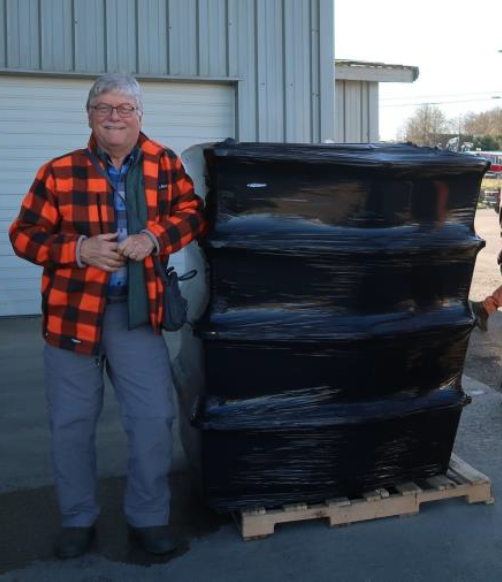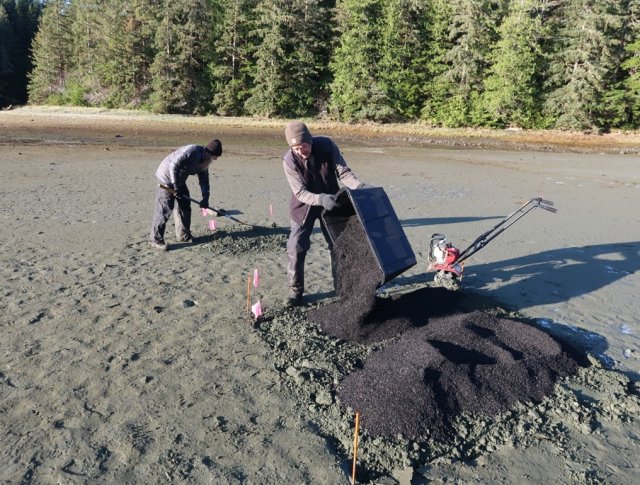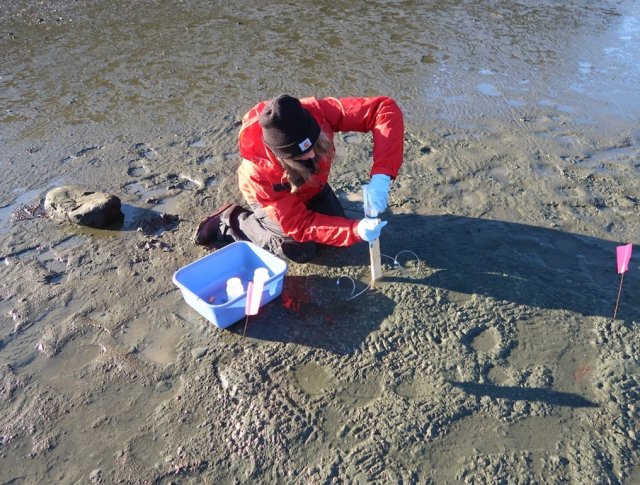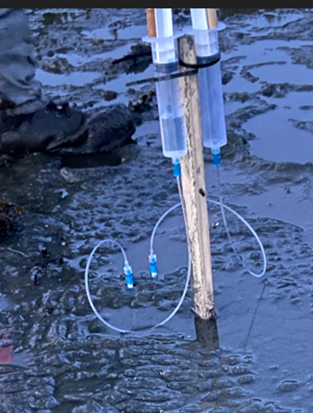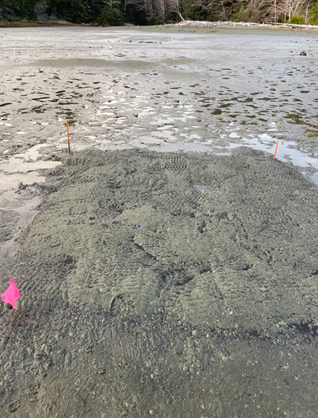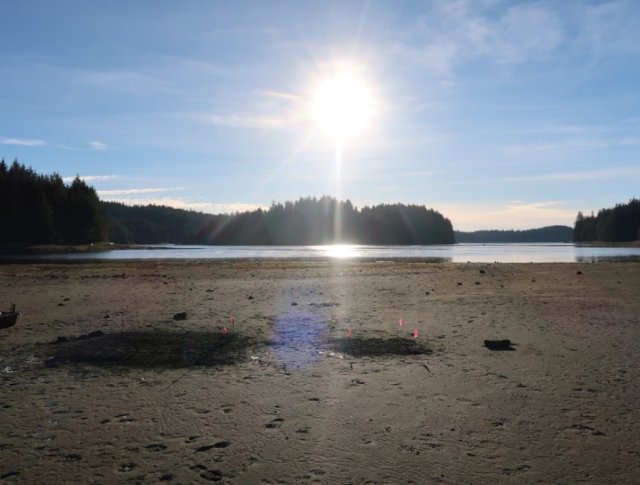EPA Research in the Field: Cleaning up the Muck at Salt Chuck
Published February 29, 2024
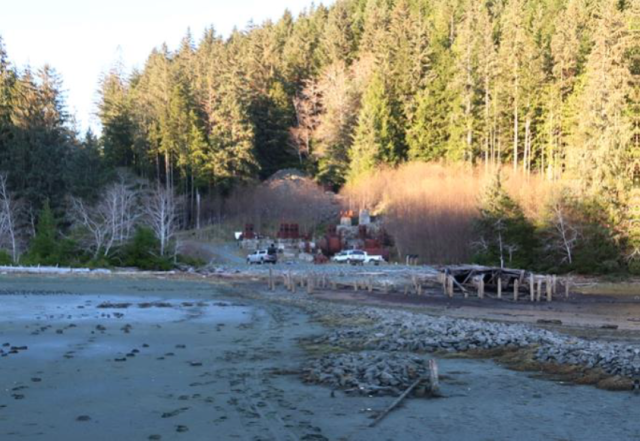
The Salt Chuck Mine is a former gold, silver, copper, and palladium mine on Prince of Wales Island in the Tongass National Forest at the northern end of Kasaan Bay in southeast Alaska. The site is just under 150 acres with 97 of them being in the intertidal area of the island. Initial sampling of the site found copper as the main contaminant in the marine sediment. The high levels of copper in the sediment have impacted the invertebrate community in the adjacent mudflats and poses an ongoing ecological risk to the benthic ecology of upper Kasaan Bay. The mine is included on the Superfund National Priority List and targeted for remediation.
EPA researchers are evaluating an in situ approach for remediating the contaminated intertidal sediment. In situ approaches treat the problem “in place” on the site as opposed to excavating the material and transporting it to a landfill. To treat the contamination, EPA researchers propose using a material called biochar to amend the intertidal sediments near the mine. Biochar is a charcoal-like material that is created by slowly heating agricultural or forestry waste biomass without oxygen. Laboratory studies show that biochar is effective at sorbing copper contamination in the marine sediments and reducing its bioaccessibility. Bioaccessibility is the availability of contaminants that can be absorbed by life around it, especially marine invertebrates. Sorbing is the physical and chemical process by which one substance becomes attached to another.
Before starting the work in Alaska, researchers tested the method in similar intertidal habitats in Oregon estuaries and found that once the biochar was tilled and compacted into the sediments, it remained in place even with strong tides and currents flowing over the plots. The amendment will remain in contact with the sediment while submerged in a marine environment. Bioassay tests in the lab using a small marine worm and different biochar concentrations mixed with contaminated sediment from the Salt Chuck Mine site helped determine how much biochar would be required to improve habitat conditions for marine invertebrates. Results showed that the 2.5% biochar treatment increased worm survival by over 90% and that the 5% treatment increased survival by even more, compared to near 0% survival in the untreated contaminated sediment collected from the flat closest to the mine.
Taking samples of the site and treating them in the lab are one thing. So, how do you treat 97 acres of intertidal sediment this way? With a lot of biochar! The EPA research team sent ½ ton of the material on a barge from Oregon to Alaska. The biochar was made as a by-product of a bioenergy power plant fueled by wood chips. During the burning process, the biochar was heated to ≥ 1000 °C. This high temperature is key for creating the metal sorption properties needed to sorb and retain copper. Once on site, researchers established twelve 2-meter by 2-meter test plots in the intertidal mudflats. The team mixed 2.5% biochar (by weight) into the top 15 centimeters of contaminated sediments. They raked and tamped the plots smooth and then after one tidal cycle, the team inserted rhizons (a small tube wrapped in a porous membrane) into the amended soil and used syringes to draw the porewater from the interstitial spaces between the contaminated sediment. Comparing the copper concentrations of the porewater from the biochar amended plots with the unamended control plots will allow the researchers to evaluate how effective the biochar is at reducing the bioaccessibility of copper.
The research team plans on returning to the site periodically to collect additional porewater samples to assess the efficacy of the biochar amendment over time. During these future visits, the team will collect sediment cores and study their chemistry. They will also measure the amount of biochar remaining to determine how long it will stay in the contaminated sediments, establish In situ bioassays to test the survival of benthic organisms due to the biochar amendments, and collect samples for conducting bioassays back in the laboratory.
The results of this research will provide guidance to the Region 10 remedial project team responsible for remediating the Salt Chuck and removing it from the National Priority List.
